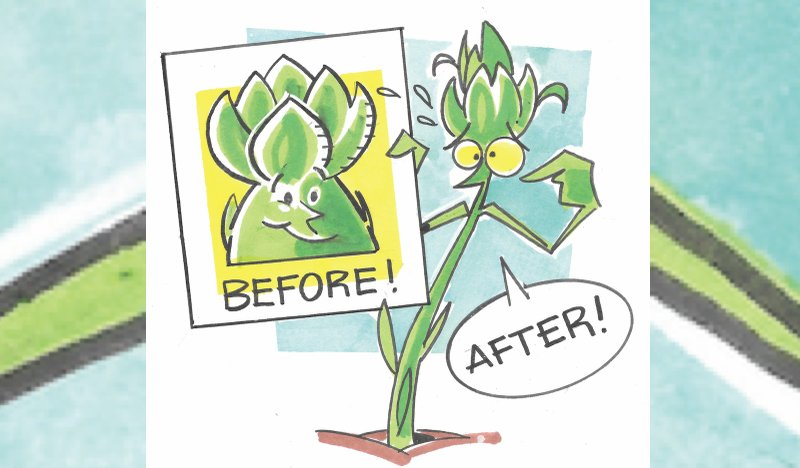Q My asparagus is coming up, but no big fat spears. Pencil diameter or smaller. I fertilize with 10-20-10 or something similar twice a year. I quit harvesting last year after the big spears began getting smaller. Am I missing something?
A How old are the plant and how much sunlight do they get? If they are at least pencil size, go ahead and harvest some, but don't over harvest. Asparagus are just getting started so you could still get more. Asparagus crowns usually begin full production when they are 4 years old. We can begin harvesting when the crowns are 3 years old. Most crowns that you buy are a year old, so you do need to wait at least a year before harvesting. Continue fertilizing after harvest, and water as needed.
Q I have some large tubs that I plant tomatoes and bell peppers in and am wanting to know if the paper from my paper shredder (very fine, 1/4 inch x 1/2 inch) can be used for mulch mixed in the soil and if it will be beneficial?
A I use shredded junk mail all the time. Avoid glossy magazines, but the rest works well. It may not be the most attractive mulch, but it works.
Q We will be moving overseas for a year, and I don't want my raised-bed garden to be a weed bed when we return. Would it be better to cover the garden with black plastic while we're gone or to plant a cover crop? Is there a cover crop that can survive maintenance-free in Northwest Arkansas for a full year? Thank you so much!
A What time of year are you leaving? I suppose you have several options. You could plant something like buckwheat, sudangrass or a millet if you are leaving soon. Buckwheat will grow 2 to 3 feet tall but will set seeds. Sudangrass will grow up to 6 feet tall, and the millets can grow between 2 and 12 feet tall, depending on variety. The last two will still provide a cover for the soil all winter after a frost hits and they are nipped back, which should exclude weeds. When you get back, cut the cover out and work the soil. Cover crops can serve as a green manure crop, helping to enrich the soil but also to prevent weeds. Covering the beds with a black plastic would also keep weeds at bay and might be a simpler option, but that would not benefit the soil in any way.
Q I am looking for foundation shrubs for a shady west exposure. We would prefer something native and evergreen. Would a "Chestnut Hill" cherry laurel be a good choice? Are the cherry laurels invasive?
A How tall do you want the plants to grow? "Chestnut Hill" is a more compact variety of the "Otto Luyken" laurel, which is an excellent shrub for the shade. It produces white spikes of fragrant flowers once or twice a year that the bees adore. While the more common large cherry laurels can grow upward of 15 feet or more, and can be spread by birds, I have not seen this to be the case with the more compact versions. It would be an excellent choice. Another native evergreen that can be a little slower to get established is leucothoe. Several varieties exist from green to variegated. Illicium is another native shade lover but may not be as winter hardy in Northwest Arkansas.

Q Can you tell me what the spiny stuff is on the Mayhaw bud? [The reader sent a photo.]
A Your plant is suffering from mayhaw cedar rust. Some call it quince rust, but since it is on a mayhaw I call it mayhaw/cedar rust. It is very similar to cedar apple rust. Apples and pears are grown more commonly in the state than mayhaws and quince, but all can be affected. This disease needs two hosts — a cedar tree, which forms cankers that can look like orange tentacles, and then a mayhaw, apple or pear. The disease completes part of its life cycle on each plant. When a mayhaw is affected, the fruit will start out with spiny spikes that will be covered in an orange powdery substance, which is the disease spores. Mayhaws are susceptible just as the blossoms open until right after their petals fall. Weather conditions need to be right for it to occur, but obviously they were this year. Once you see the disease, it is too late to spray. If your tree gets hit every year, the window of opportunity to spray with a fungicide opens just as the blooms begin to show color and it closes with flower drop. Some people recommend removing all cedars from the area, but that is neither possible nor practical.
Retired after 38 years with the University of Arkansas Cooperative Extension Service, Janet Carson ranks among Arkansas' best known horticulture experts. Her blog is at arkansasonline.com/planitjanet. Write to her at P.O. Box 2221, Little Rock, AR 72203 or email
HomeStyle on 04/13/2019

